Hi Everyone,
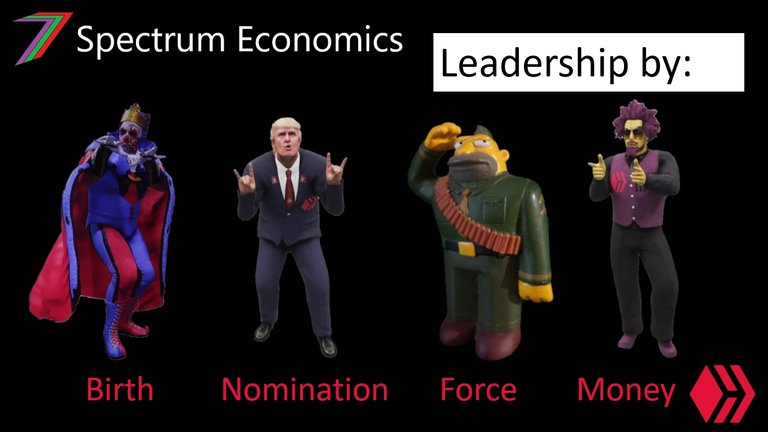
This is the final post in my ‘prevent, solve, or manage’ approach series. I have covered many different areas in this series. Most of these areas are very broad and fundamental to our quality of life; see the list of posts below:
- Health - Prevent, Cure, or Treat
- Crime – Prevent, Fix, or Manage
- Housing – Prevent, Solve, or Manage
- Education – Prevent, Solve, or Manage
- Travel, Transport, and Transportation – Prevent, Solve, or Manage
- Migration – Prevent, Solve, or Manage
- Money – Prevent, Solve, or Manage
- Environment – Prevent, Solve, or Manage
In the final post, I will be applying the ‘prevent, solve, or mange’ approach to leadership. Leadership is an important area to investigate as it affects all other areas. Leadership affects decision-making. It affects outcomes and how these outcomes are reached.
Do we need leadership?
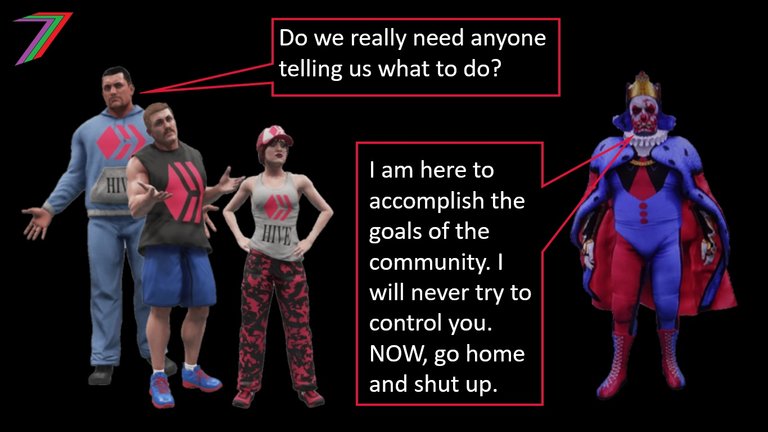
We are surrounded by some type of leadership. There is leadership at home. There is leadership in the workplace. There is leadership in the businesses we visit and use. There is leadership in the community. There is leadership at various levels of Government. Leadership is not just a human trait, it is present in many species of animals. I think we can safely say that some form of leadership in human society is inevitable and probably necessary.
People vs. The System

Which is more important, the leaders (people) or the system of leadership that they operate in? A good system for determining leadership should produce good leaders. If bad leaders happen to be produced, a good system would remove them. A bad system for determining leadership is likely to produce bad leaders. Even if a bad system produces some good leaders, if these leaders are unable to change the system, which is true in most cases, they are likely to be replaced by bad leaders. Therefore, it is essential to have a good system of leadership.
This post will be focusing on leadership as a system rather than on leadership from people or the type of qualities required to be good leaders.
What type of leadership?
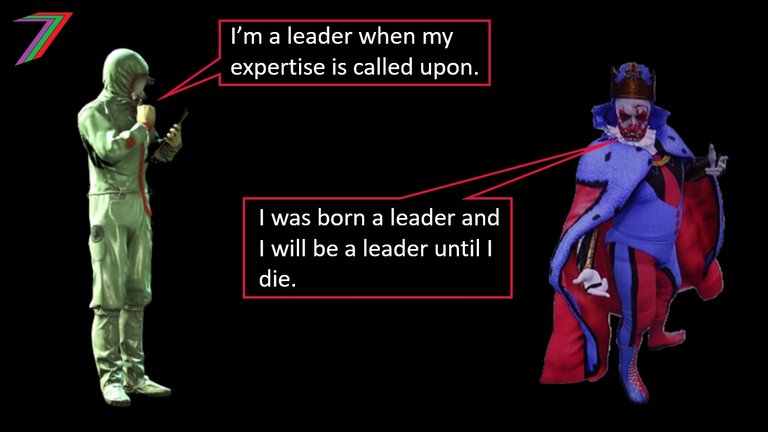
Leadership can come in many forms. Leadership can come from individuals or from groups. It can be centralised or decentralised. It can come from those in permanent leadership roles or from those in temporary ones. Below are a few examples of possible leadership types.
Centralised leadership
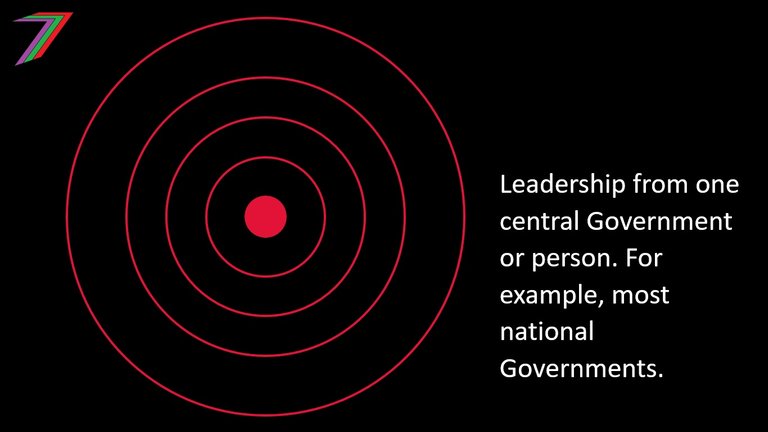
Centralised leader based on expertise

Group centralised leadership
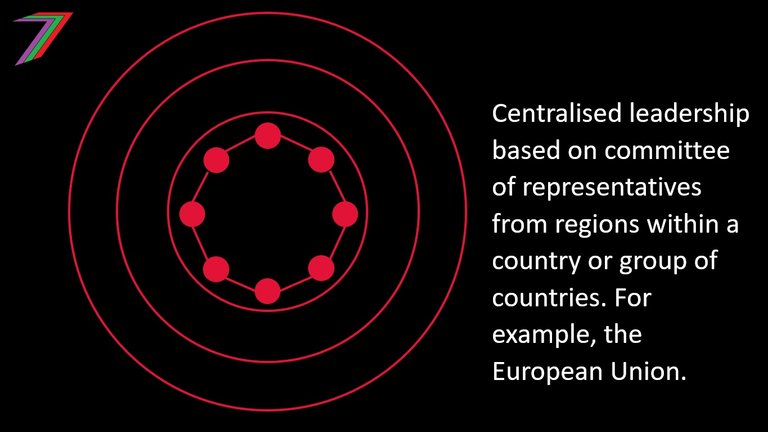
Decentralised cooperating group leaders
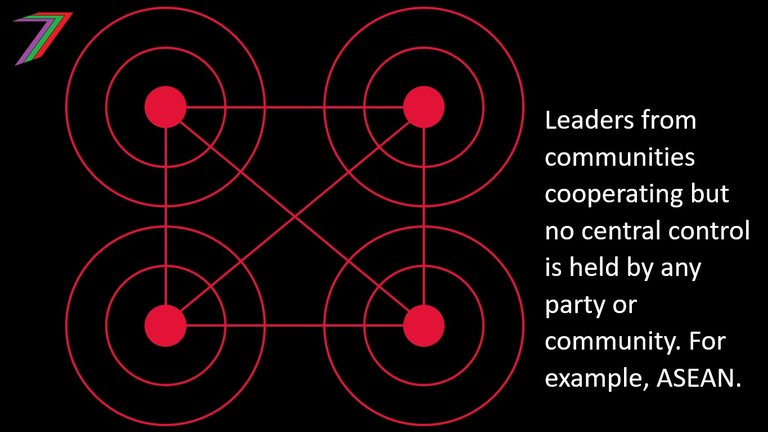
Completely decentralised leadership
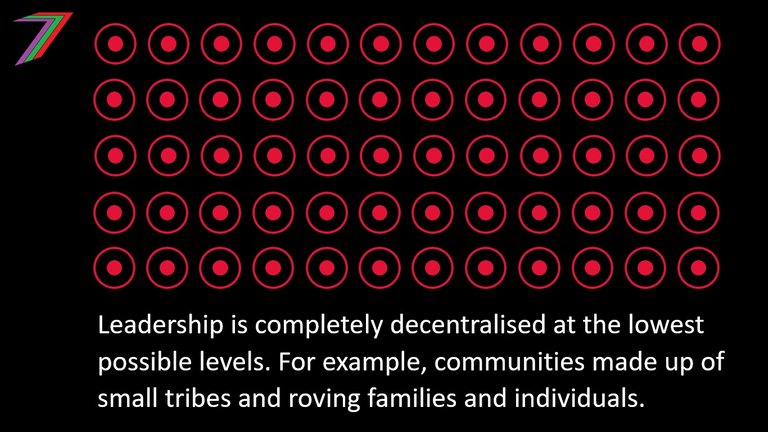
Decentralised leadership with overarching centralised leadership
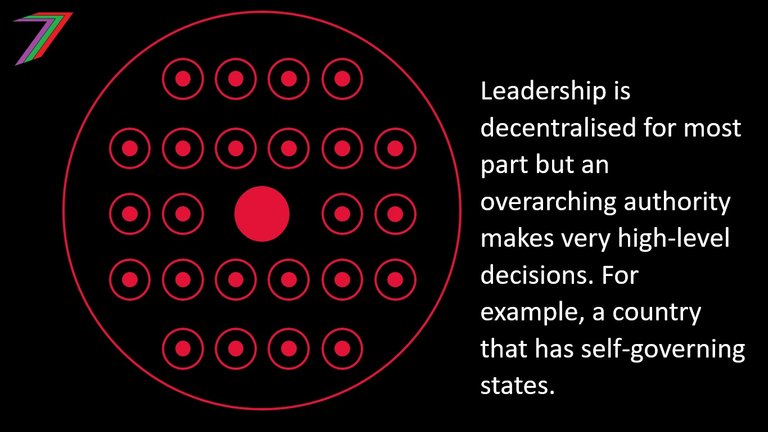
Decentralised leadership operating within overarching framework
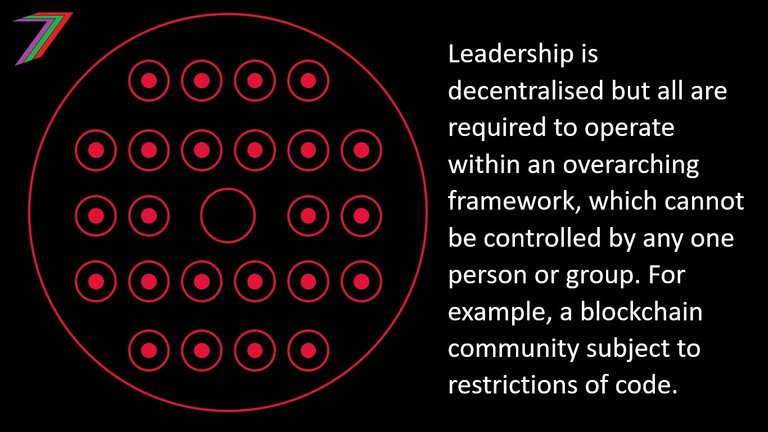
Note: Solid circles represents central leader. Empty circles represents levels of leadership. Highest levels are closest to the central leader.
How do we acquire leaders?
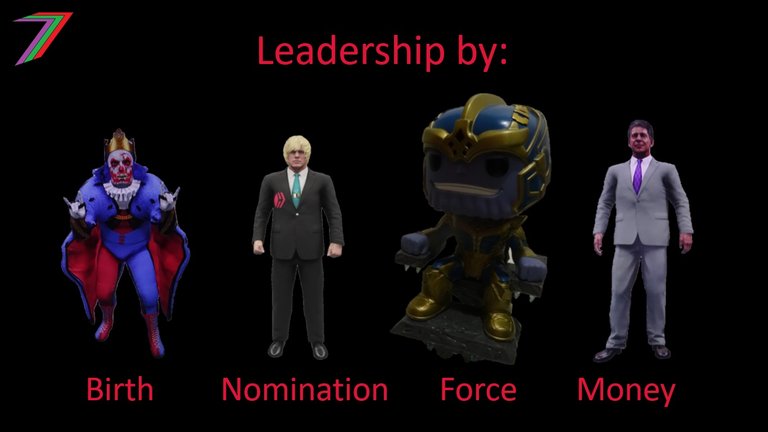
Leadership can be obtained through many different methods. It can be informally earned based on particular desirable traits. It can be acquired through birth. It can be acquired from nomination. It can be won through popular vote and/or elections. It can be acquired through force and violence. It can acquired through skill, knowledge, experience or wisdom.
The method used to determine leadership can greatly affect the quality of leadership. Leadership arrived through some form of acceptance is more likely to be successful than leadership that is achieved through force or entitlement.
How can we obtain successful leadership?
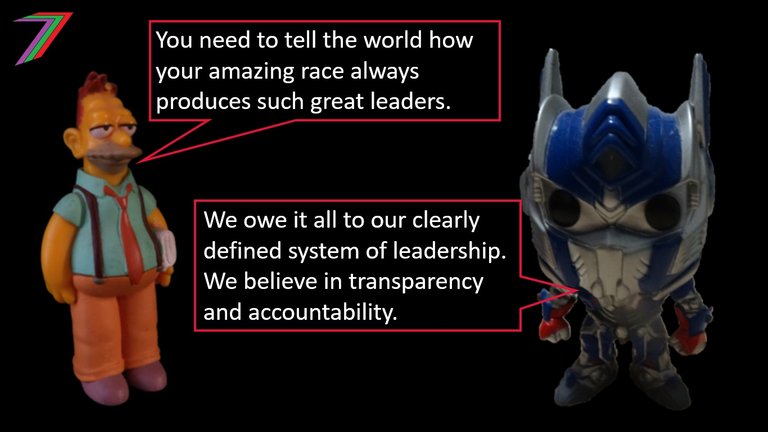
Successful or good leadership needs to be defined. For leadership to be successful, it needs to be the type of leadership that is desired by the community. I do not believe there is one type of leadership that suits all communities or all situations.
I have identified several criteria, which I believe are important to achieve a type of leadership that can be successful and desirable.
Criteria for system of leadership
- Transparent
- Accountable
- Representative
- Fair
- Fit-for-purpose
- Consistent
- Effective
Transparent
Leadership needs to be transparent so that the represented community is aware of all actions and decisions. It is essential that the community is aware of decisions and actions that are made. This ensures these actions and decisions are consistent and representative of the wishes of the community. Transparency is essential to be able to hold leaders accountable for their actions.
Accountable
Leadership needs to be held accountable for all actions taken and decisions made. Accountability is essential to ensure leadership performs to the required standard. If leadership falls short of these actions, it will face consequences. These consequences could include punishments or removal from leadership roles.
Representative
Leadership needs to be representative of the community’s opinions and perspective. Leadership should be put in place to achieve the community’s desired outcomes. Achieving the community’s desired outcomes is an important measure of the effectiveness of leadership.
Fair
Leadership needs to be as fair as possible to all those the leaders represent. Communities are often diverse. Different groups within the community often have different needs and wants. Those with minority opinions or positions need to be considered by leadership. Fairness should also enable equal opportunities to all in the community.
Fit-for-purpose
Leadership needs to be fit-for-purpose for the role it is required to perform. The most appropriate type of leadership can vary significantly depending on many factors such as type of task, timeframes, and the people involved.
Consistent
Leadership needs to be consistent in response and approach to particular events or circumstances. The community needs to be confident that leadership will adopt consistent practices. Consistency helps improve fairness, reliability, and effectiveness. Consistency also facilitates growth and improvement in practices. Consistency can be improved if there is a high level of transparency.
Effective
Leadership needs to be effective in order to get things done. There are many possible ways effectiveness can be achieved. It will depend on circumstances as well as the people involved. If the previous six criteria are met, effective leadership should eventually be reached.
How does the above criteria lead to desirable leadership?
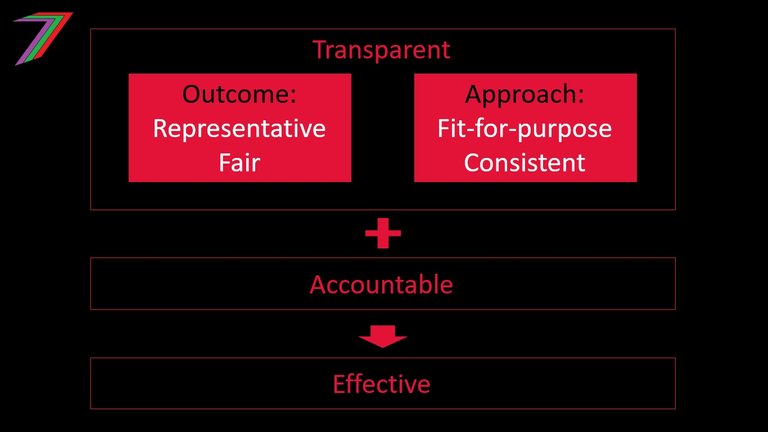
Transparency can be used to determine performance. If it is observed that leadership is successfully fulfilling the goals of those they represent as well as maintaining fairness, leadership can be considered effective. If that does not occur, leadership can be held accountable. Fit-for-purpose leadership enables the best use of resources to achieve a variety of desired goals. Consistency enables these goals to be continued to be fulfilled.
Prevent, Solve, or Manage

The ‘prevent, solve, or manage’ approach can be applied to leadership. ‘Prevent’ can be used to maintain desirable leadership, ‘Solve’ can be used to fix exiting problems with leadership, and ‘Manage’ can be used if problems with leadership is unable to be solved in the current environment. The ‘prevent, solve, or manage’ approach is applied differently depending on the starting position. If the existing system of leadership is producing successful leadership, ‘prevent’ is the priority. If the existing leadership is unsuccessful, ‘solve’ is the priority.
Prevent
‘Prevent’ would involve preventing an undesirable form of leadership taking hold. Undesirable leadership is more likely to occur if any of the outlined criteria are relaxed. If leadership is no longer representative, desired objectives cannot be achieved. If leadership is not fair, particular groups will become disadvantaged. If leadership is not transparent, motivations, actions, and even outcomes cannot be verified. If leadership is not accountable, ineffective leadership cannot be corrected, as there will be no consequences for poor performance. If leadership is not consistent, leadership loses reliability as well as credibility. If leadership is not fit-for-purpose, leadership will struggle to be effective and efficient as knowledge and expertise may not match the criteria of the task. If leadership is not effective, it fails those it represents. However, transparency and accountability can be used to remedy the causes of ineffective leadership.
Solve
‘Solve’ would involve rectifying undesirable leadership. Accountability is essential to solving inadequate leadership. Transparency is essential to obtaining accountability. Without both accountability and transparency, inadequate leadership cannot be easily solved.
In the absence of either transparency or accountability, we can create awareness. Awareness can be acted upon to create change. However, this change must lead to transparency and accountability or else inadequate leadership will be replaced with more inadequate leadership.
Manage
‘Manage’ would involve coping with inadequate or bad leadership in a manner that reduces its negative effect. The ‘manage’ approach is the least desirable approach, as it does not attempt to remove inadequate leadership. However, in the absence of transparency and accountability and a form of leadership that strongly represses the will of the community, a ‘manage’ approach might be the only possible approach. It is also possible that leadership could be so bad that even a ‘manage’ approach is not possible. The only alternative left would be to flee the community.
Applying ‘Prevent, Solve, or Manage’ approaches
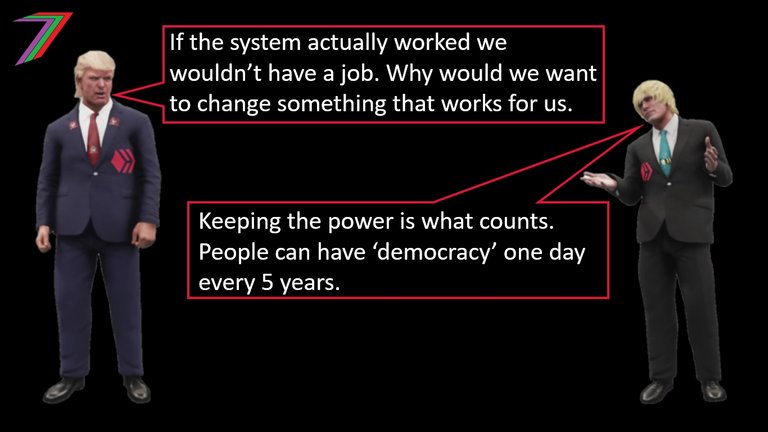
Different communities find themselves in different positions in regards to leadership. It is rare to find successful quality leadership. When it is found, it is normally within small communities. Therefore, the ‘solve’ approach is the most likely starting place. Transparency and accountability needs to be used to ensure representation and fairness, which can be achieved through fit-for-purpose and consistent leadership. Once effective leadership has been reached it needs to be maintained by preventing the deterioration of any of the criteria for leadership. The ‘manage’ approach should only be applied temporarily until it is possible to ‘solve’ the leadership problems. ‘Manage’ approach cannot be used as a long-term approach.
Summary
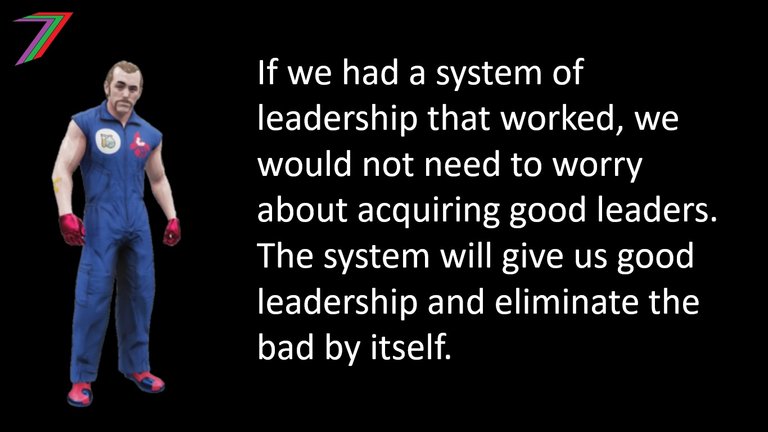
- Society requires some form of leadership.
- Leadership is important as it affects the entire functioning of society.
- Quality of leadership is dependent on the system and not individual leaders.
- There are many types of leadership. There is no one form of leadership that suits all circumstances.
- How leadership is acquired will greatly affect the quality of leadership.
- Leadership acquired through acceptance is more likely to be successful than leadership acquired through force or entitlement.
- For leadership to be successful and desirable, the system of leadership needs to meet certain criteria.
- Transparency and accountability are the two most important criteria of any system of leadership.
- The starting position of the system of leadership determines if ‘prevent’ or ‘solve’ approaches should be prioritised.
- If we have a successful system, the focus should be placed on preventing the existing system from failing.
- If we have an unsuccessful system, the focus should be on fixing the problems of the existing system.
Post Conclusion
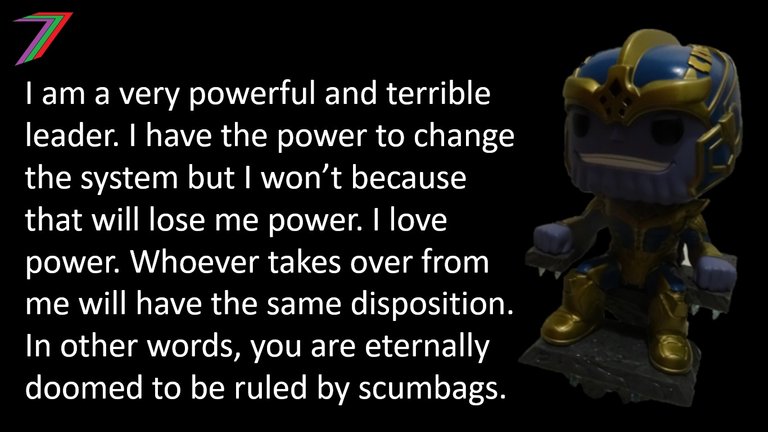
Obtaining quality leadership has been a problem humanity have been unable to solve. This is because we have relied too heavily on finding good leaders rather than developing a system that ensures we can consistently obtain good leadership. Focus needs to be placed on defining and creating a good system of leadership. In this post, I have outlined criteria for systems of leadership that will prevent and/or stop leaders from performing below the expectations of the community they represent.
This post has described how the ‘prevent, solve, or manage’ approach can be used to achieve desirable and successful leadership. The focus of the approach has been around obtaining (solve) or maintaining (prevent) the criteria described in the post. Different types of systems of leaderships have not been discussed in the context of meting these criteria. This is because there are many variations of systems of leadership and each has had varying levels of success at meeting the criteria. I would suggest the readers compare the system of leadership in their country, state, or town with the criteria described in this post. How many of the criteria does this system of leadership fulfil? How many good leaders has your country, state or town had in recent years?
Series Conclusion
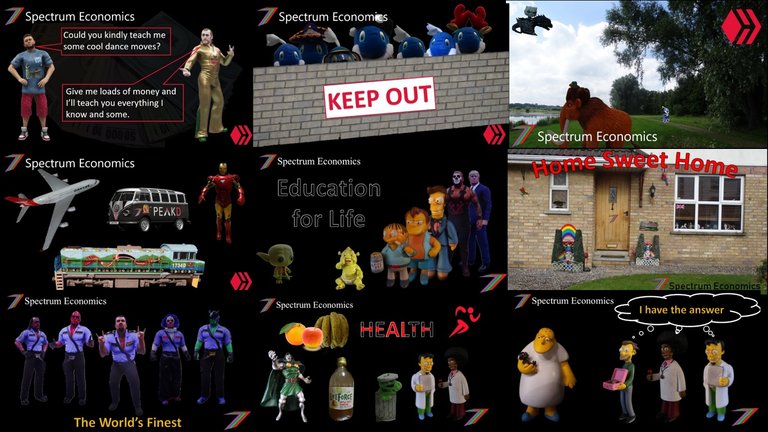
I designed the ‘prevent, solve, or manage’ approach as a framework for achieving desired outcomes as well as tackling the problems that prevent the fulfilment of these outcomes. The posts in this series have dealt with what I consider to be core areas. The outcomes described can be considered universal. For example, we all desire good health, good education, good leadership, affordable quality housing, low crime, ease and freedom of movement, facilitation of trade and harmony with our environment.
The ‘prevent, solve, or manage’ approach could be applied to many other areas where particular outcomes are desired but there are problems or potential problems that threaten these outcomes.
In my next series of posts, I will explore and discuss the ‘Blockchain Economy’. The Blockchain Economy series will feed off the content I created in the ‘prevent, solve, or manage’ series. I will be exploring the same outcomes and problems discussed in this series but will explain how the blockchain can potentially address them. I will also describe how ‘prevent, solve, or manage’ approach can be used in the context of the Blockchain Economy.
More posts
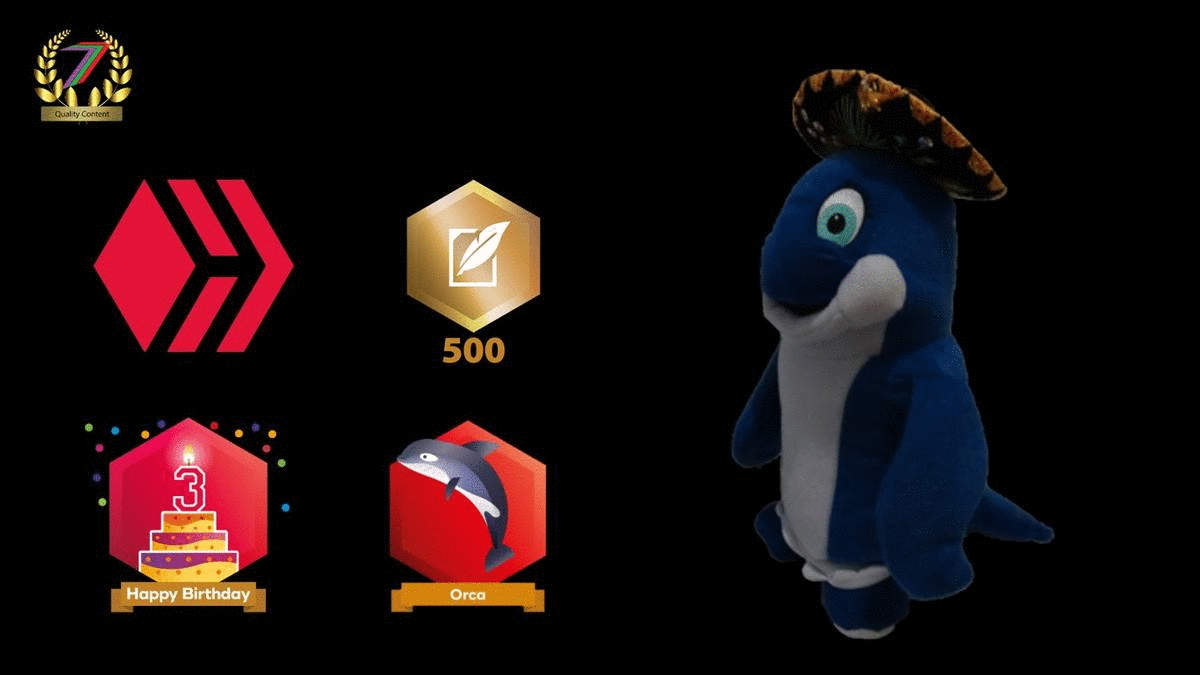
If you want to read any of my other posts, you can click on the links below. These links will lead you to posts containing my collection of works. These 'Collection of Works' posts have been updated to contain links to the Hive versions of my posts.
Future of Social Media





@spectrumecons, In many cases life circumstances gives birth to Leadership Qualities.
No matter how small or how big the Goal is we have to lead ourselves towards that goal.
Have a Productive time ahead and stay blessed always.
That is true but my concern is about having a system that produces good leadership. Leaders come and go but the system remains. Think of a monarchy. We could have a really good king or queen but the person next in line could be a terrible person.
Yes, that sounds true.
System is a Chain and every Link of this Chain influences generation regards to the era of that particular Rule Of Link.
Have a wonderful time ahead and stay blessed always.
Very important post and lesson. Thanks for sharing.
Hey no problem, glad you liked it.
well spoken, wise words, i learnt a lot from this post
That's great.